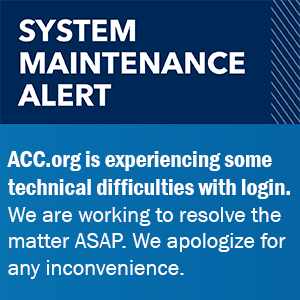Mortality After Procedural or Spontaneous MI
Quick Takes
- Both procedural MI and spontaneous MI with troponin elevation >35x URL were associated with a 4-fold or higher increase in mortality.
- However, for lower levels of troponin elevation (>1-5x or >5-35x URL), only spontaneous MI had a significant impact on mortality.
- These findings suggest that troponin elevations exceeding certain thresholds seem to be indicative of substantial myocardial injury and are associated with increased mortality, irrespective of whether the injury is due to a spontaneous plaque rupture or erosion or to an iatrogenic mechanism.
Study Questions:
What is the impact of procedural myocardial infarction (pMI) and spontaneous myocardial infarction (spMI) across different levels of troponin elevation on mortality among patients undergoing percutaneous coronary intervention (PCI)?
Methods:
The investigators included patients with chronic coronary syndrome (CCS) and baseline troponin ≤1 time (x) the upper reference level (URL) or with acute spMI who underwent PCI. PMI was defined as post-PCI troponin increase >1x URL in patients with CCS, and spMI comprised any acute coronary syndrome with elevated troponin. The 1-year risk of all-cause death was assessed after pMI and spMI across three strata of troponin elevation (>1-5x, >5-35x, >35x URL), with CCS patients having post-PCI troponin ≤1x URL as reference group. Conventional troponin I was measured using the Architect methodology (Abbott, Chicago, IL).
Results:
Among 10,707 patients undergoing PCI from 2012 to 2020, 8,515 patients presented with CCS, and 2,192 with spMI. Among CCS patients, 913 (10.7%) had pMI. Troponin peaks >1-5x, >5-35x, and >35x URL were observed in 53%, 41%, 6% of pMI, and in 24%, 38%, 37% of spMI, respectively. Mortality at 1 year was higher after pMI (7.7%; adjusted hazard ratio [aHR], 4.40; 95% confidence interval [CI], 1.59-12.2), and spMI (8.5%; aHR, 7.57; 95% CI, 5.44-10.5) with troponin peak >35x URL compared with no MI (1.4%). Mortality was also increased after spMI with troponin peak >1-5x or >5-35x URL.
Conclusions:
The authors report that mortality at 1 year was significantly increased after pMI and spMI with troponin peak >35x URL, while for troponin levels ≤35x, only spMI had a relevant impact on mortality.
Perspective:
This study reports that both pMI and spMI with troponin elevation >35x URL were associated with at 4-fold or higher increase in mortality. However, for lower levels of troponin elevation (>1-5x or >5-35x URL), only spMI had a significant impact on mortality. Taken together, these findings suggest that troponin elevations exceeding certain thresholds seem to be indicative of substantial myocardial injury and are associated with increased mortality, irrespective of whether the injury is due to a spontaneous plaque rupture or erosion or to an iatrogenic mechanism. Additional larger studies of patients undergoing PCI in which high-sensitivity troponin assays are monitored may provide additional insight into the prognostic impact of periprocedural MI.
Clinical Topics: Invasive Cardiovascular Angiography and Intervention, Acute Coronary Syndromes
Keywords: Myocardial Infarction, Percutaneous Coronary Intervention, Troponin
< Back to Listings

